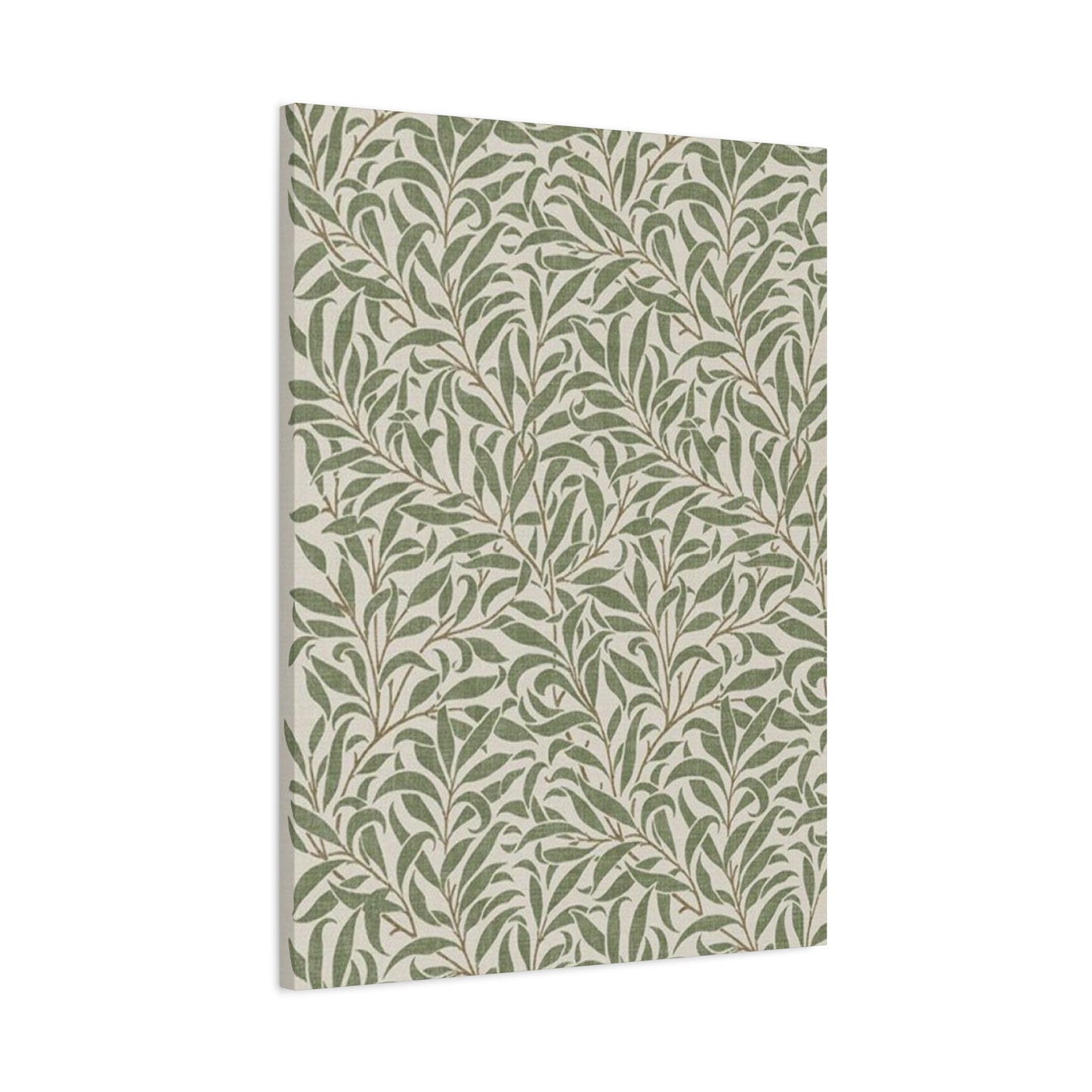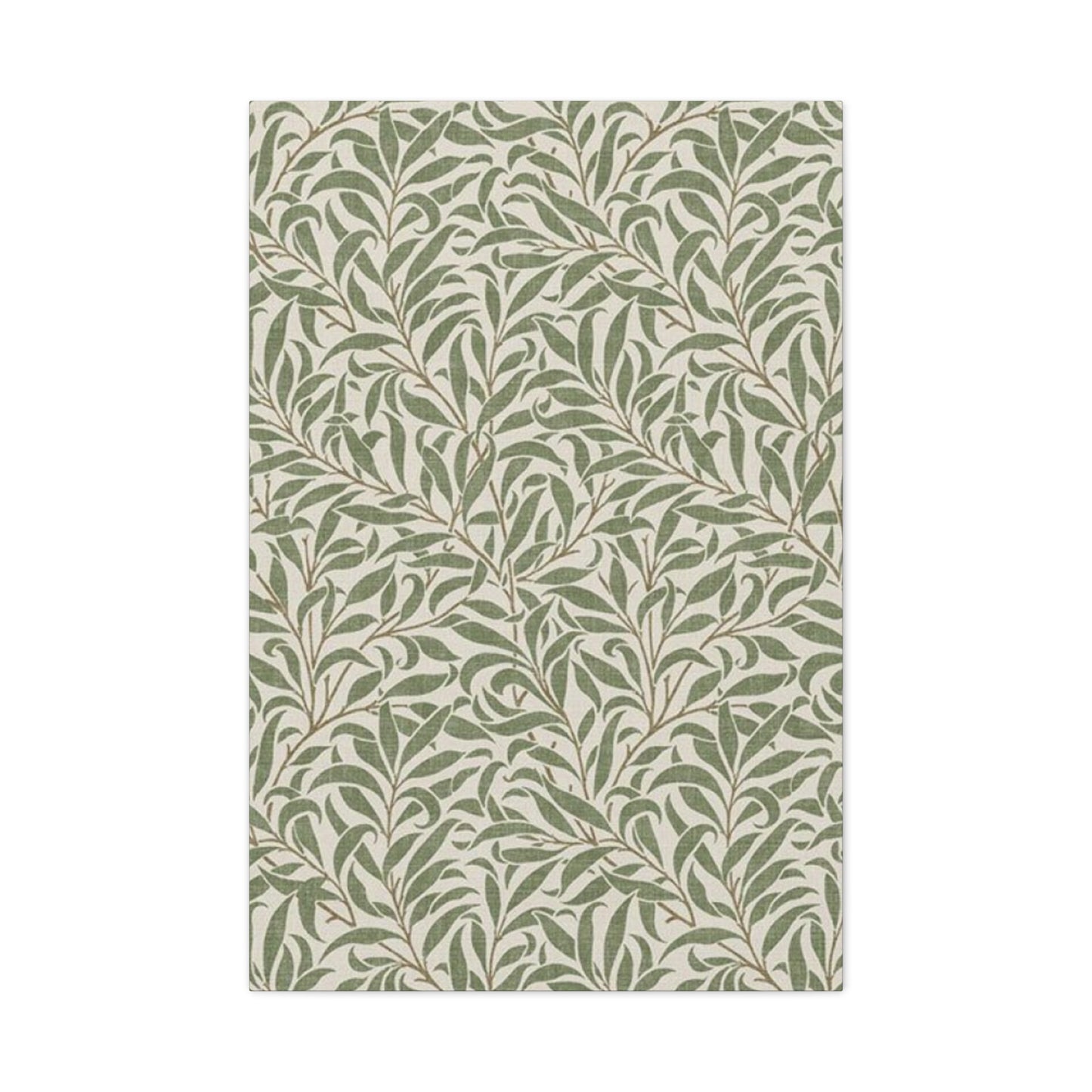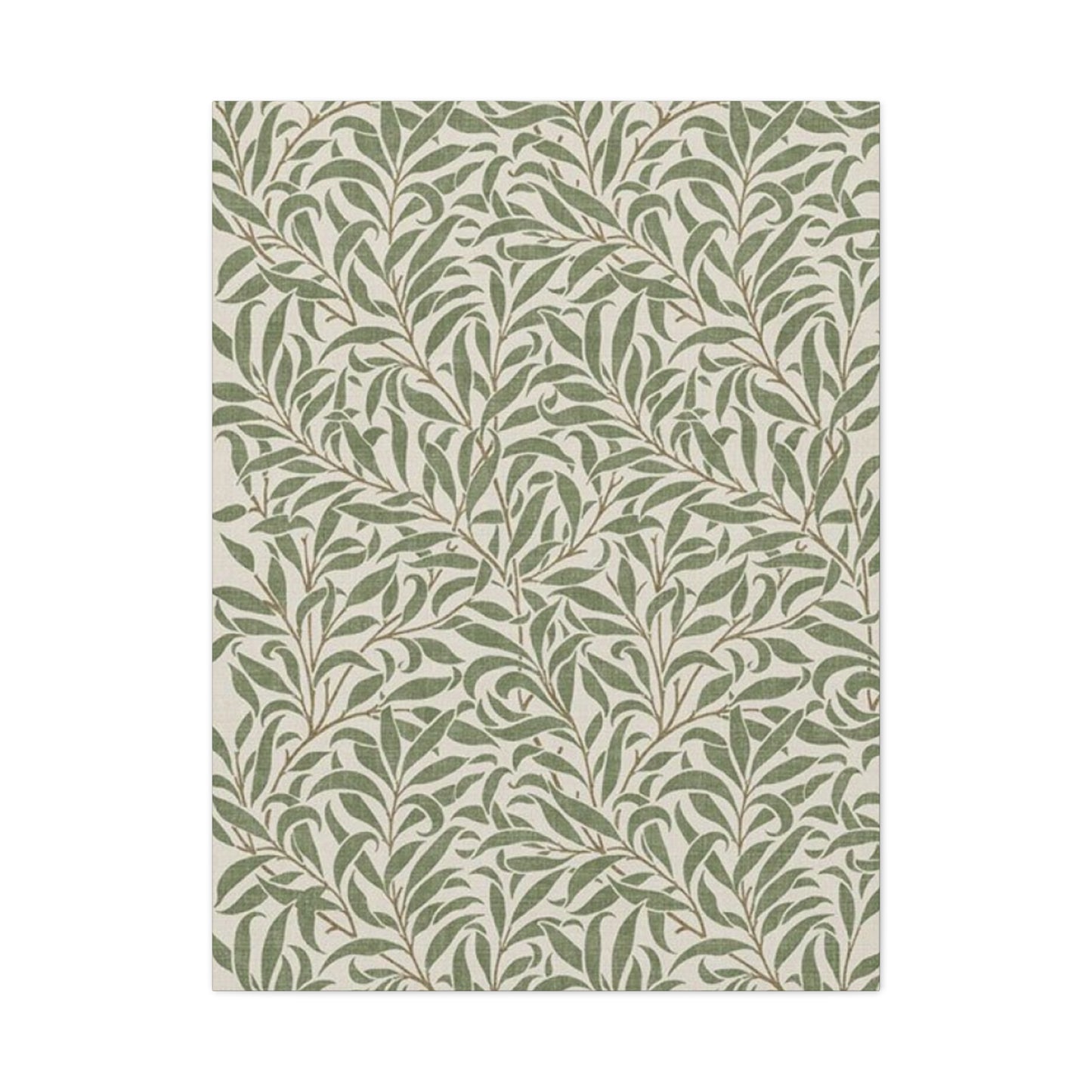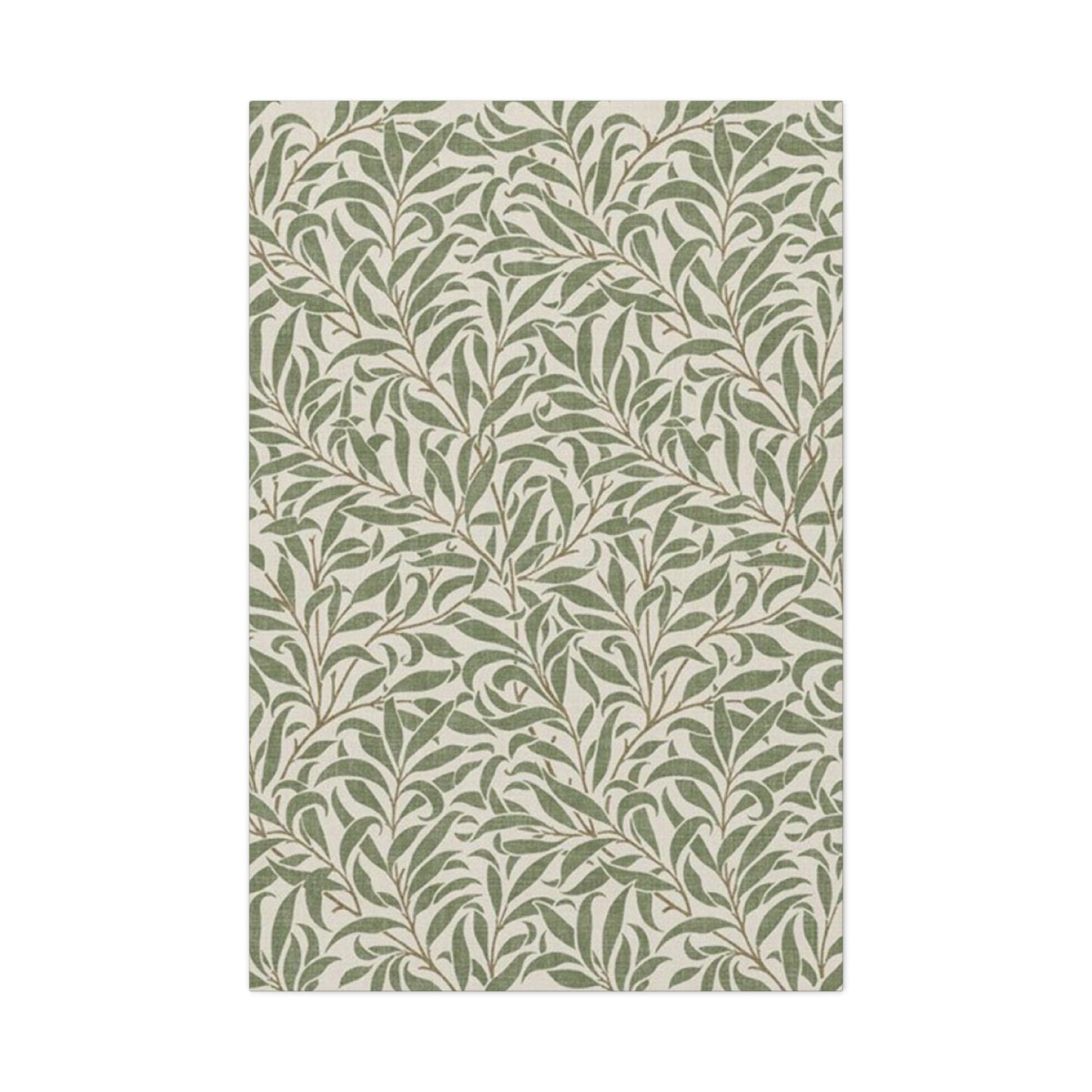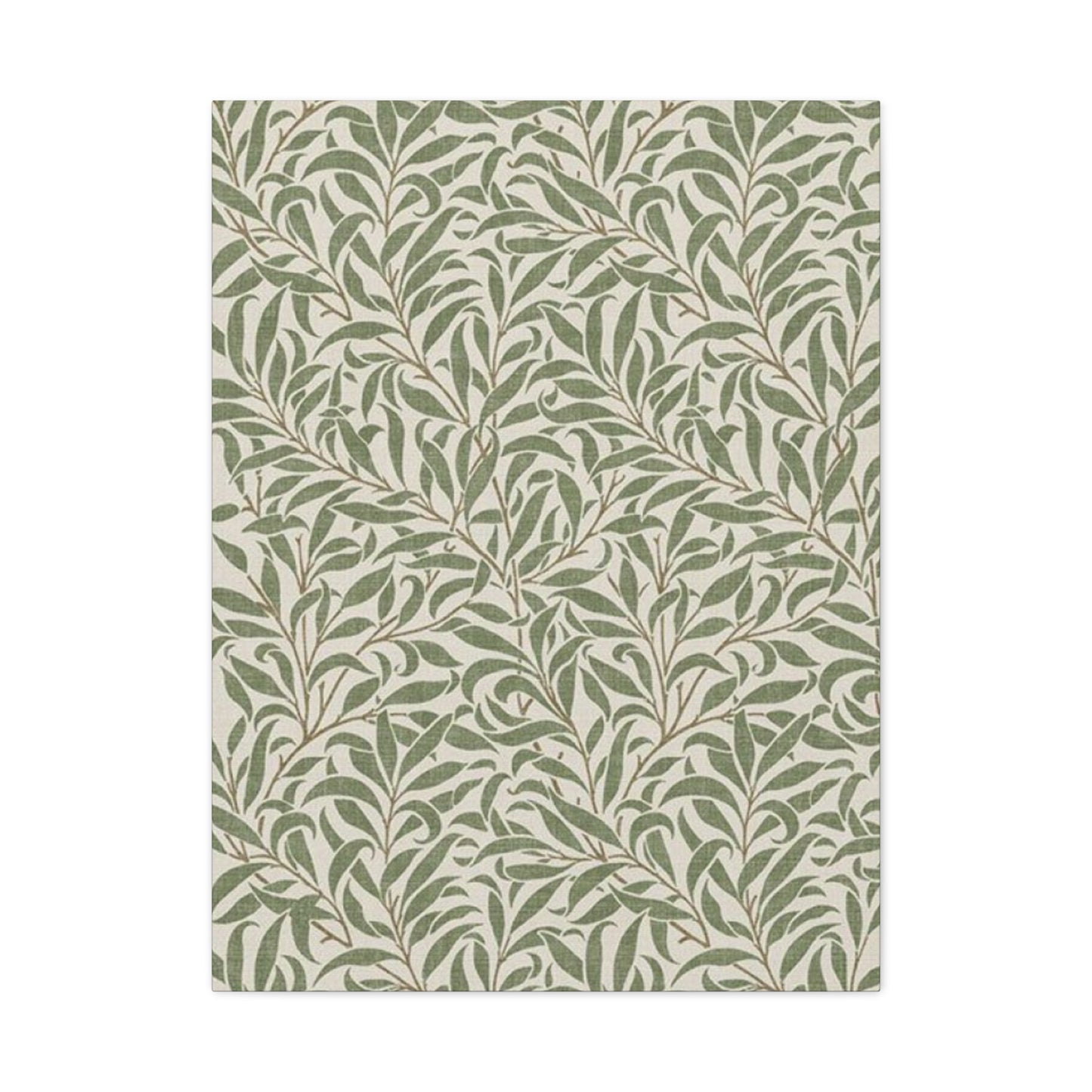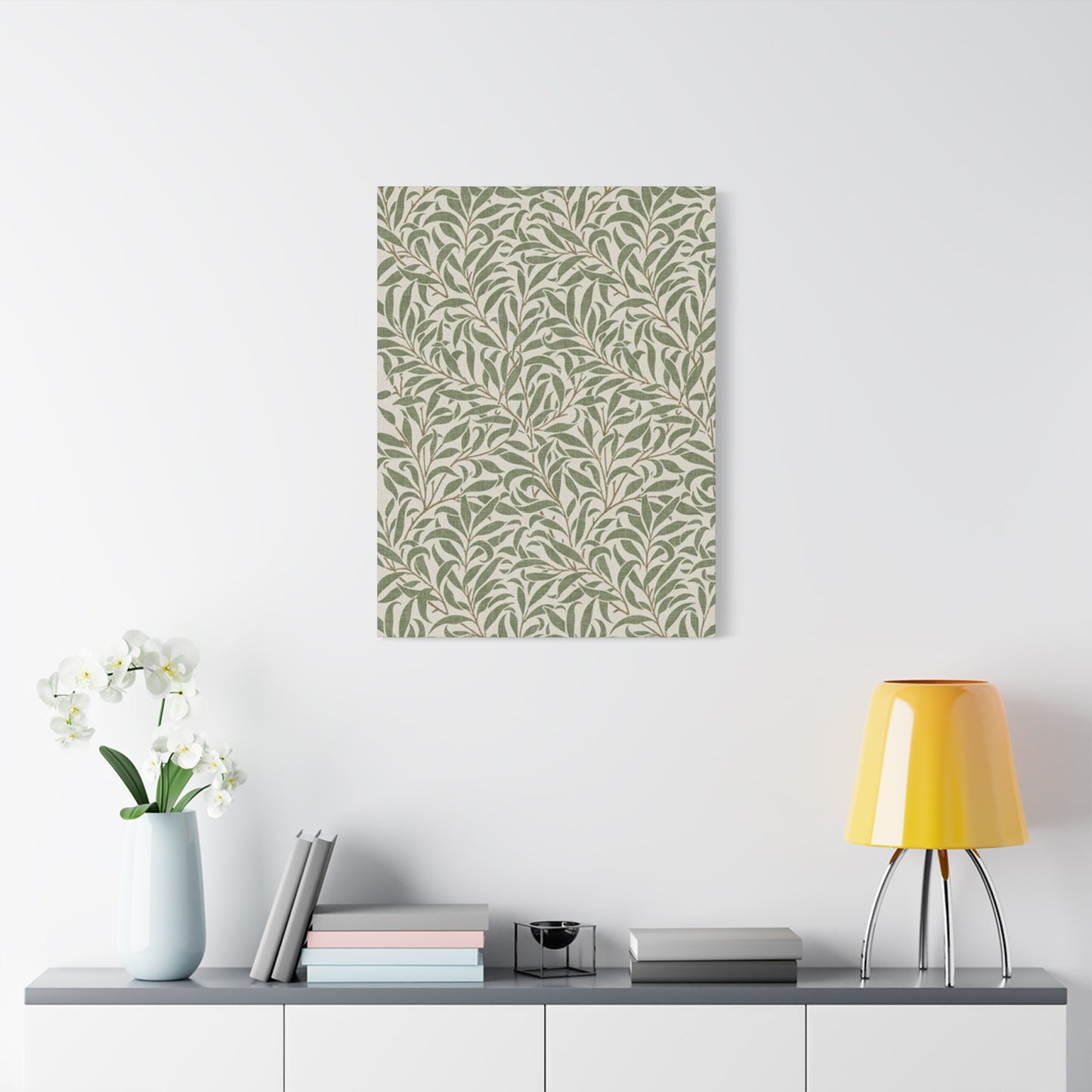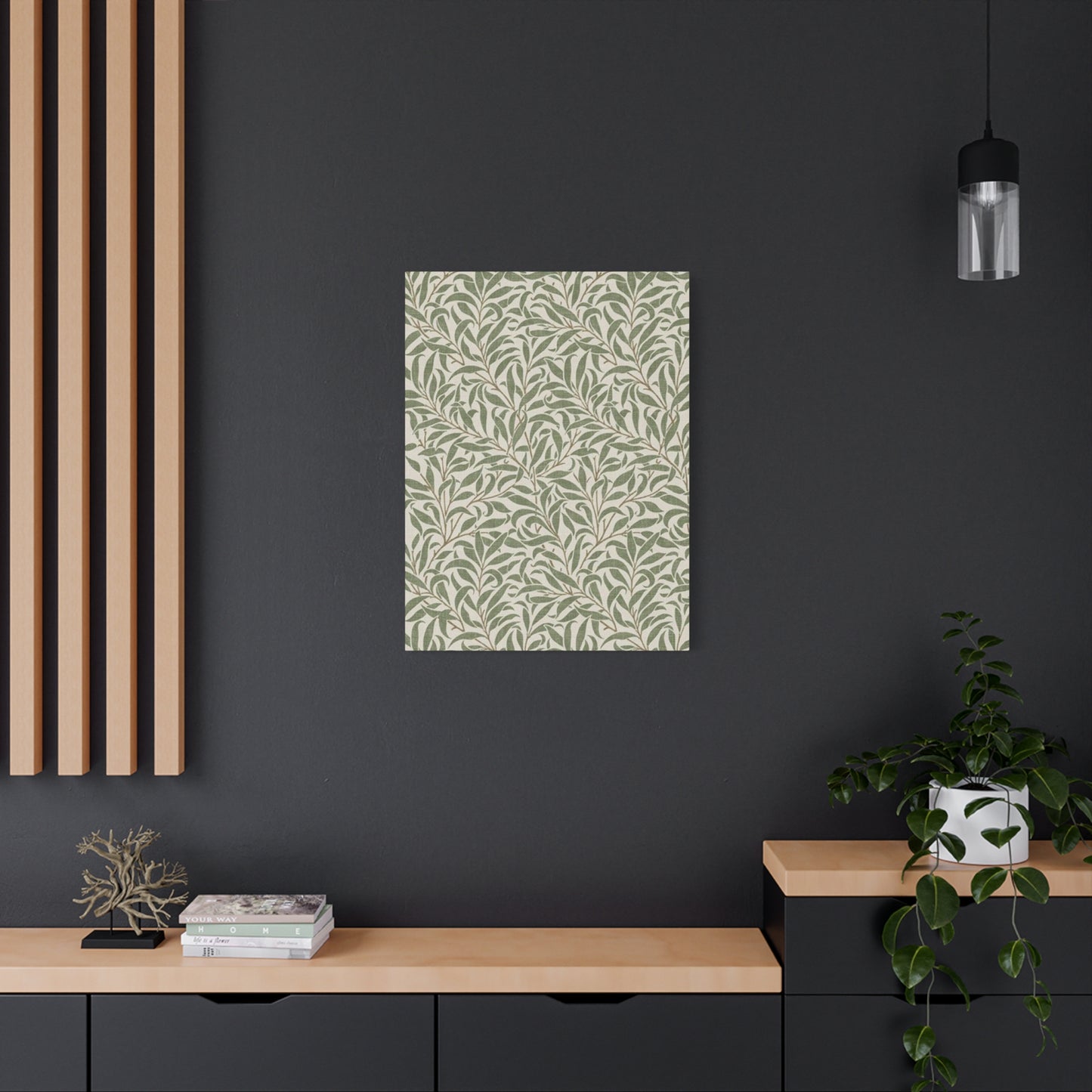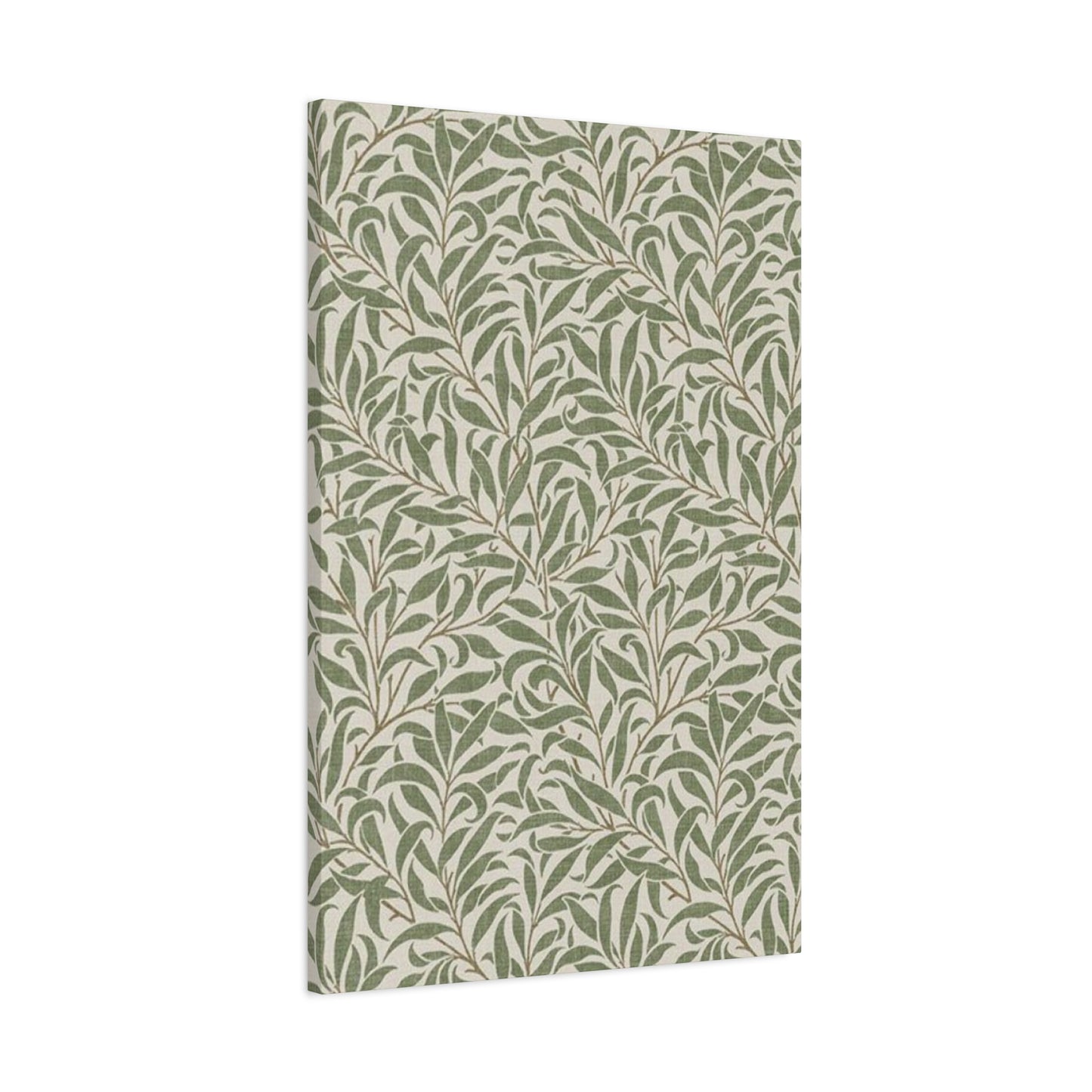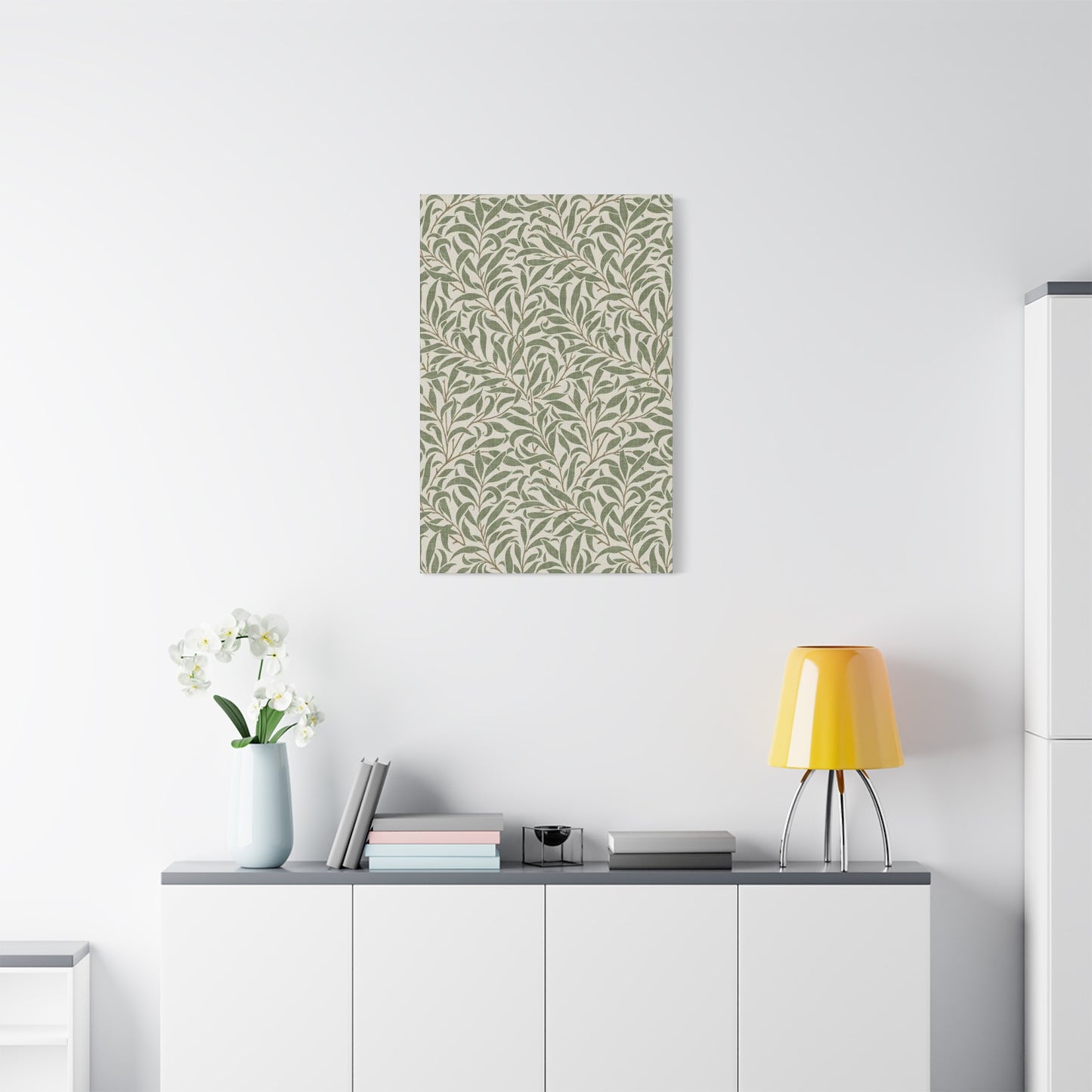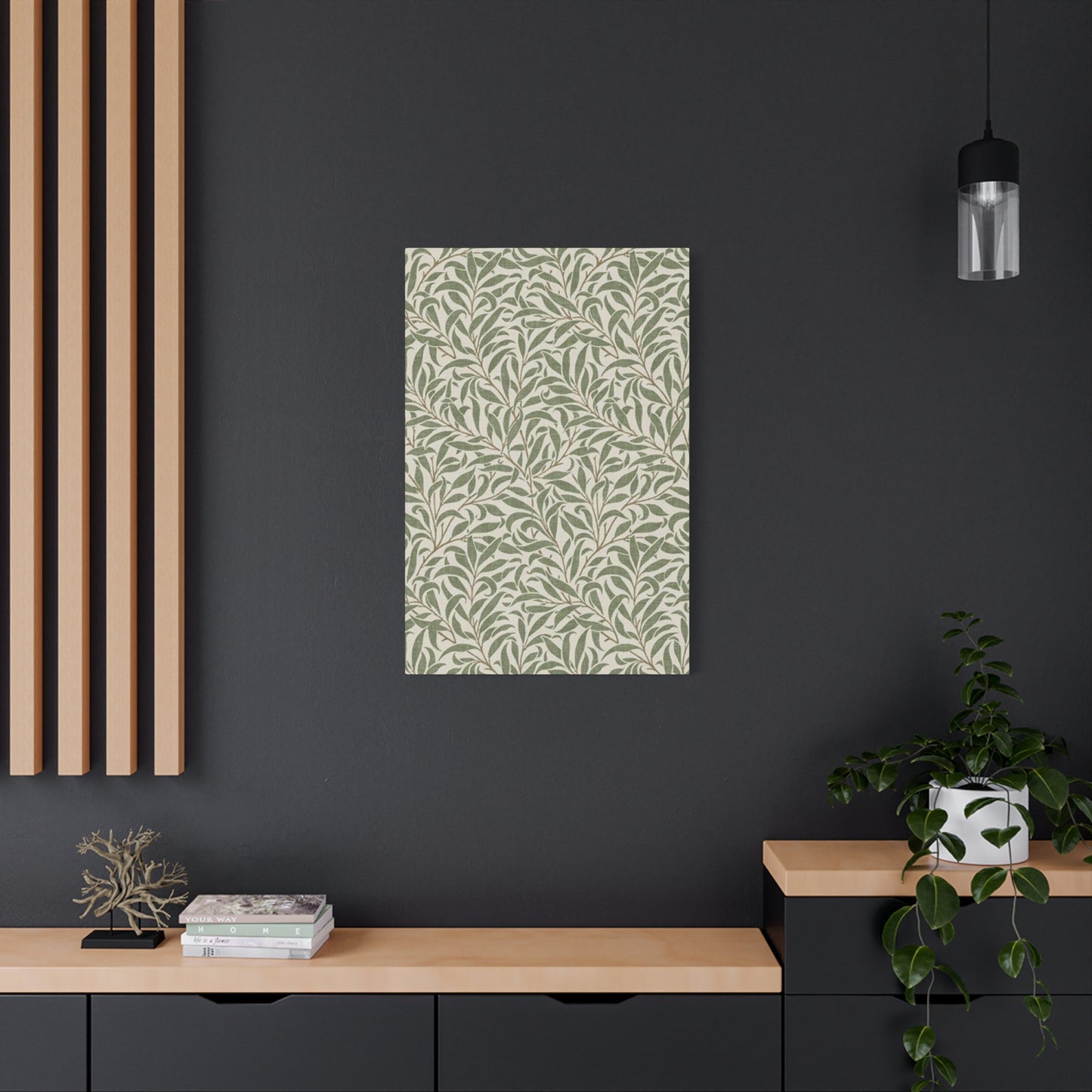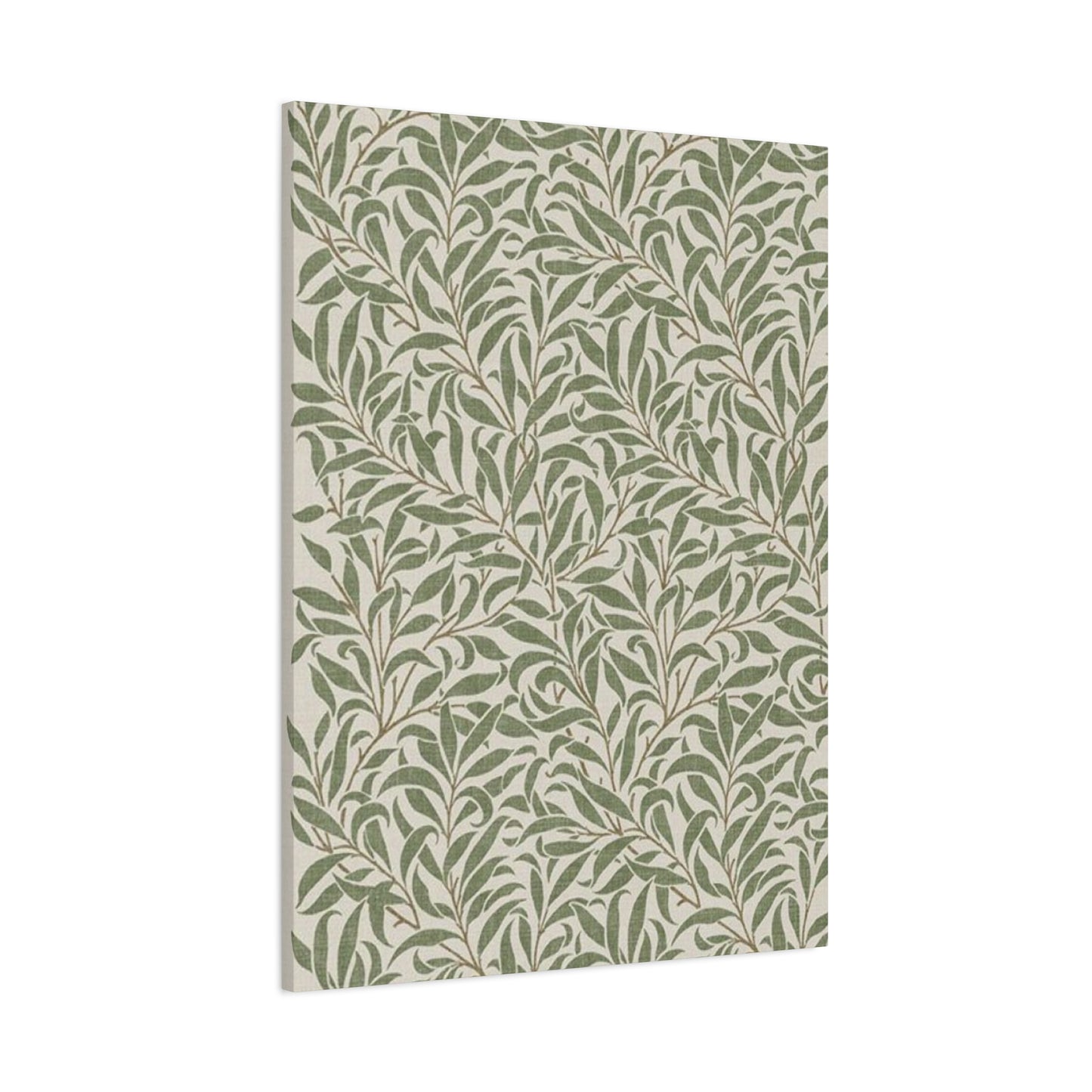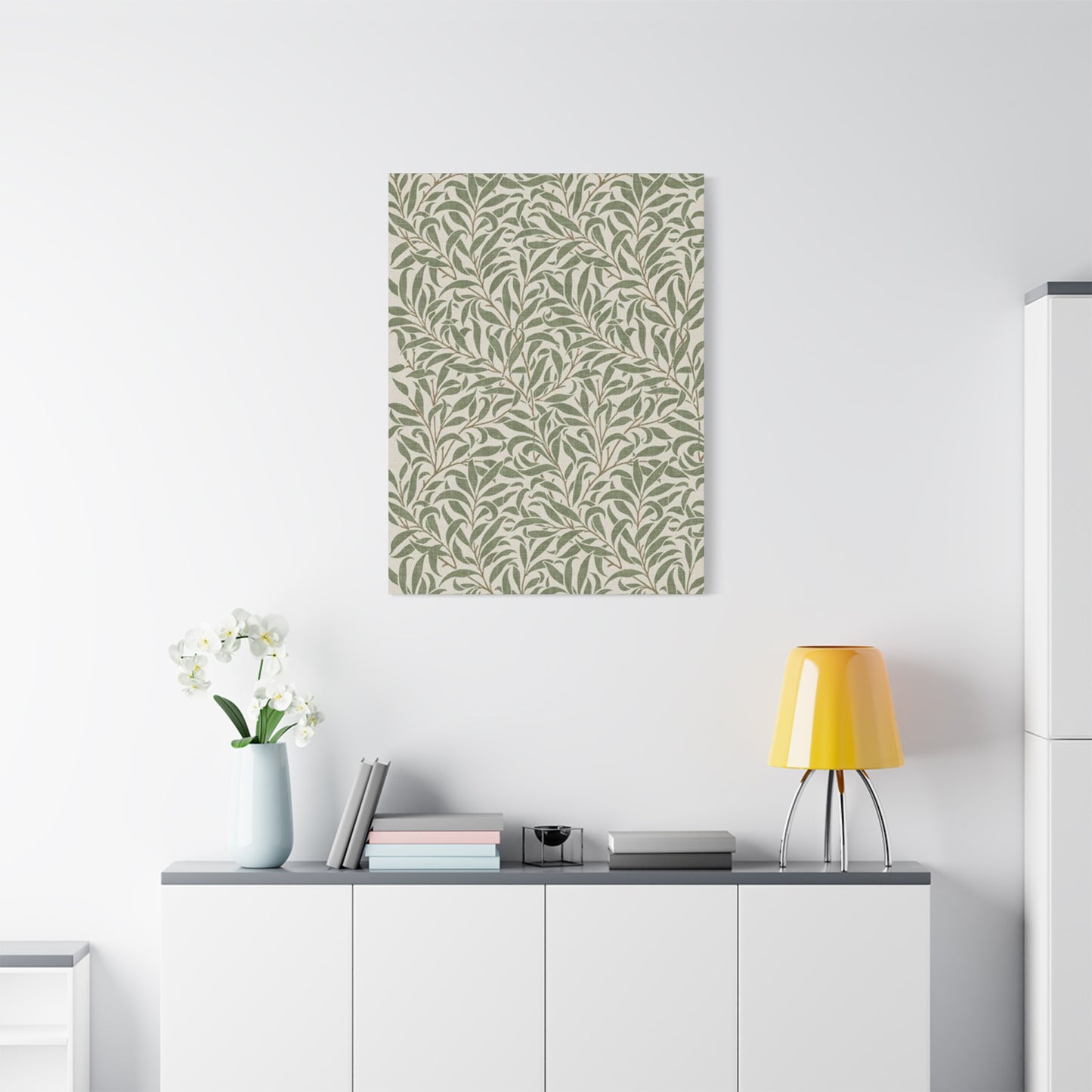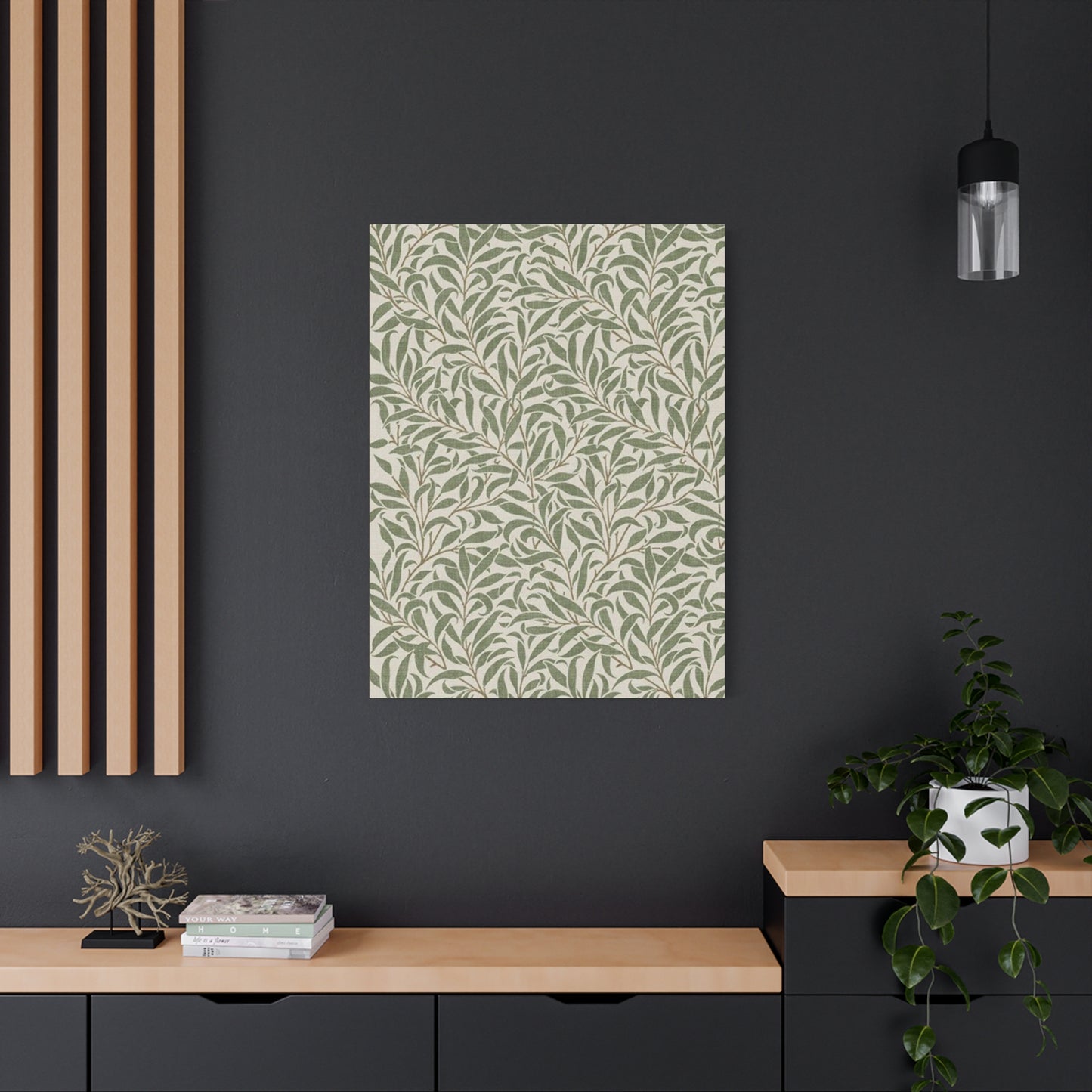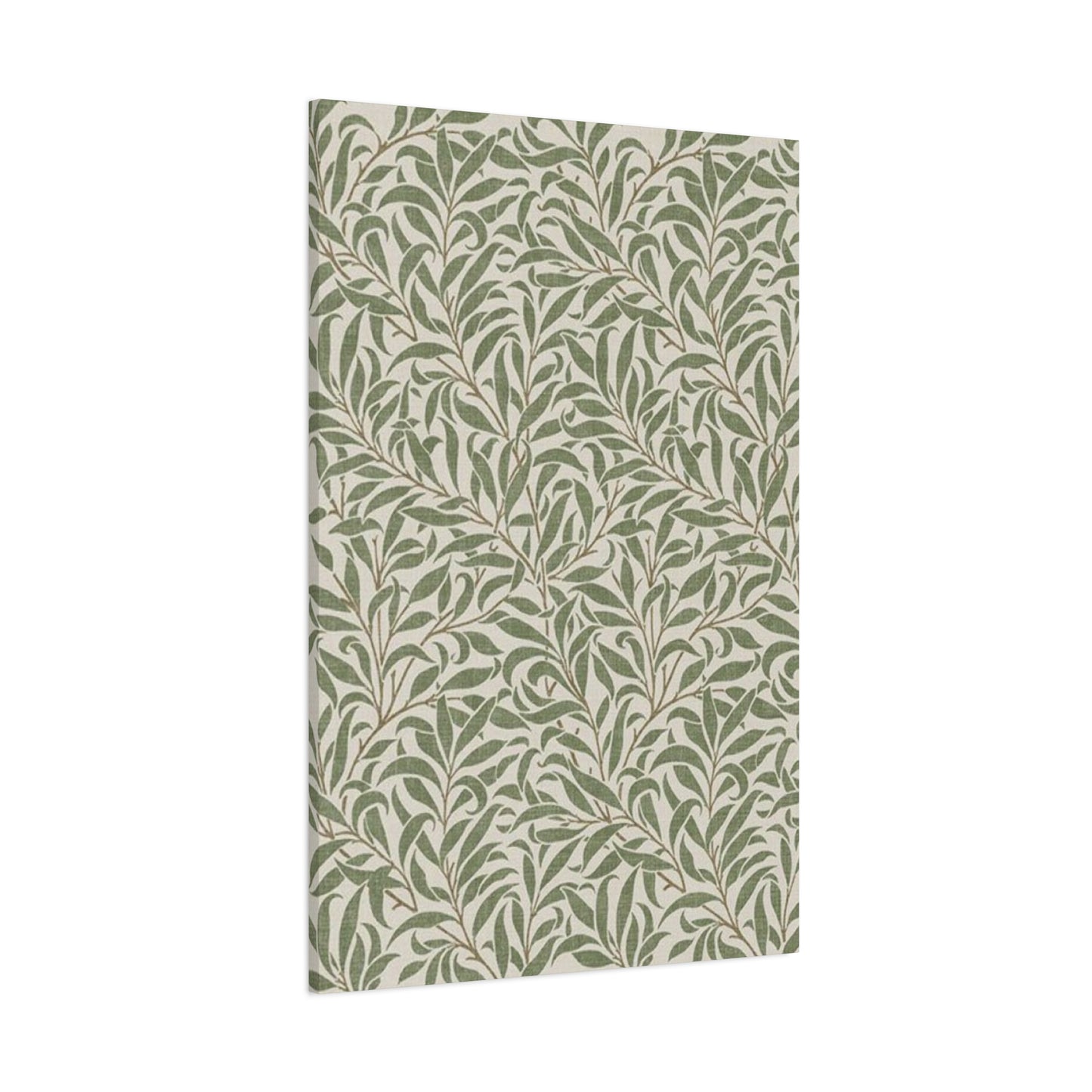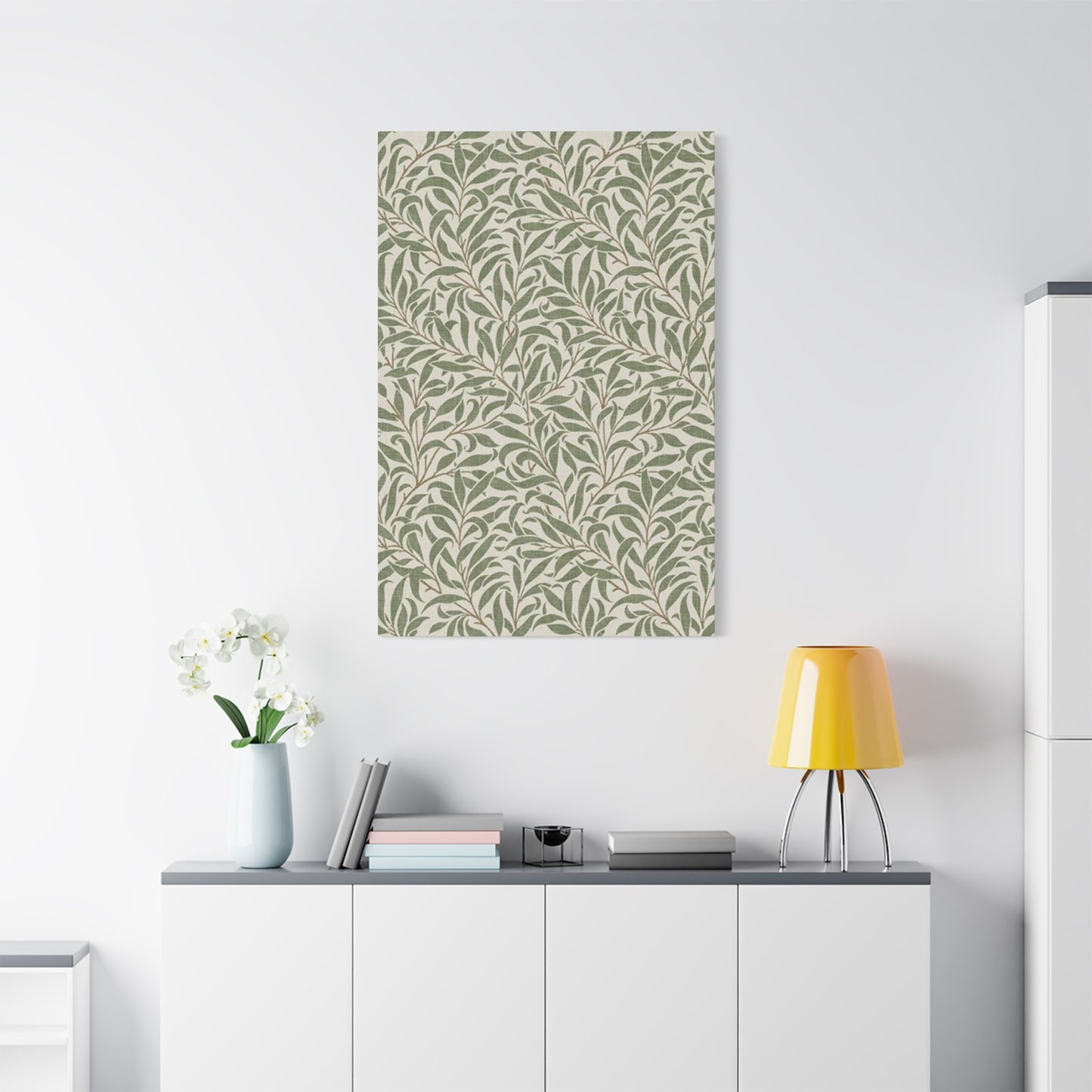Nature in Design: The Artistic Beauty of Olive Green Plant Pattern Wall Art
The intersection of nature and interior design has created a remarkable revolution in how we perceive and decorate our living spaces. Among the most captivating trends that have emerged in recent years is the incorporation of botanical artwork, particularly pieces featuring olive green plant patterns. These artistic creations have transcended mere decoration to become essential elements in creating harmonious, calming, and aesthetically pleasing environments. The olive green hue, reminiscent of Mediterranean landscapes and ancient wisdom, combined with intricate plant patterns, offers a unique visual experience that bridges the gap between the natural world and modern living spaces.
The journey of botanical art dates back centuries, with artists and naturalists meticulously documenting plant life through detailed illustrations and paintings. Today, this rich tradition continues in contemporary form through wall art that captures the essence of various plant species in stunning detail. The olive green color palette specifically has gained tremendous popularity due to its versatility and psychological effects. This earthy, muted tone creates a sense of tranquility and sophistication that complements various interior design styles, from minimalist Scandinavian aesthetics to rustic farmhouse charm.
When we examine the appeal of olive green plant pattern posters and wall art, we discover a complex interplay of color psychology, artistic composition, and cultural significance. The color olive green itself carries profound meanings across different cultures and contexts. In nature, it represents growth, renewal, and vitality. In design, it symbolizes sophistication, elegance, and connection to the earth. The combination of this particular shade with botanical patterns creates artwork that speaks to our innate desire to bring the outdoors inside, a concept known as biophilic design that has been proven to enhance mental well-being and productivity.
The Historical Evolution of Botanical Artwork
The practice of creating botanical illustrations has a fascinating history that stretches back to ancient civilizations. Early botanical artists worked primarily for scientific purposes, documenting plant species for medicinal and educational reasons. Ancient Egyptian papyri featured detailed plant drawings, while Greek and Roman scholars created herbals that combined artistic representation with practical information about plant properties. During the Renaissance, botanical art flourished as exploration brought new plant species to Europe from distant lands. Artists developed increasingly sophisticated techniques to capture the delicate details of leaves, stems, flowers, and fruits.
The golden age of botanical illustration occurred during the eighteenth and nineteenth centuries when expeditions to exotic locations required skilled artists to document newly discovered flora. These artists faced enormous challenges, working in difficult conditions to create accurate representations before specimens wilted or decayed. Their work resulted in magnificent volumes that combined scientific precision with artistic beauty. Notable botanical artists like Pierre-Joseph Redouté, whose illustrations of roses remain iconic, and Maria Sibylla Merian, who documented the metamorphosis of butterflies alongside their host plants, established standards of excellence that continue to influence botanical art today.
The invention of photography might have rendered botanical illustration obsolete, but instead, the art form evolved. Artists began emphasizing aesthetic qualities alongside scientific accuracy, creating works that appealed to art collectors as much as to scientists. The Arts and Crafts movement of the late nineteenth century celebrated nature-inspired designs, incorporating botanical motifs into textiles, wallpapers, and decorative arts. This tradition continued through the Art Nouveau period, which featured flowing, organic forms inspired by plant life.
In contemporary times, botanical art has experienced a remarkable renaissance. Digital technologies have opened new possibilities for creating and reproducing botanical artwork, making it accessible to a broader audience. Modern artists draw inspiration from historical botanical illustrations while incorporating contemporary design sensibilities. The olive green plant pattern aesthetic represents a perfect synthesis of these influences, combining the detailed observation characteristic of traditional botanical art with color palettes and compositions that resonate with current design trends.
Understanding Color Psychology in Interior Design
Color psychology plays a crucial role in how we experience and interact with our environments. The colors surrounding us influence our emotions, behaviors, and even physiological responses. Understanding these effects helps explain why olive green plant pattern wall art has become such a popular choice for interior decoration. The color green, in general, occupies a unique position in the visible spectrum and in human psychology. It represents the natural world more directly than any other color, as vegetation covers much of the earth's surface.
Research in environmental psychology has demonstrated that exposure to green hues can reduce stress, lower blood pressure, and promote feelings of calm and relaxation. These effects likely stem from our evolutionary history, as green environments typically indicated the presence of water, food, and shelter. Our brains are hardwired to respond positively to green spaces, a phenomenon that extends to representations of nature in art and design. When we incorporate green elements into our living spaces, we tap into these deep-seated psychological responses.
Olive green specifically offers distinct advantages over brighter, more saturated greens. Its muted, earthy quality creates a sense of sophistication and maturity that bright greens cannot achieve. This color suggests aged wisdom, like ancient olive trees that have weathered countless seasons. It evokes Mediterranean landscapes, with their sun-drenched hillsides and silvery-green foliage. The subtlety of olive green makes it exceptionally versatile, allowing it to serve as either a dominant feature or a subtle accent depending on the overall design scheme.
The psychological impact of olive green extends beyond simple color perception. This hue carries cultural associations that vary across different societies. In Western contexts, olive green often suggests military or outdoor adventure themes, lending a sense of ruggedness and durability. In Mediterranean cultures, it connects to olive cultivation, a practice with thousands of years of history and deep cultural significance. The olive branch has served as a symbol of peace since ancient times, adding layers of meaning to artwork featuring this color.
When combined with plant patterns, olive green creates a multisensory experience that engages viewers on multiple levels. The organic shapes and forms typical of botanical patterns activate different areas of the brain than geometric patterns do. Our visual system has evolved to be particularly adept at recognizing and processing natural forms. This evolutionary adaptation means that viewing plant patterns can feel inherently satisfying and comfortable, even when we cannot articulate why we find them appealing.
Biophilic Design Principles and Their Application
Biophilic design represents a revolutionary approach to creating built environments that acknowledges and addresses our fundamental need for connection with nature. This design philosophy recognizes that humans evolved in natural settings and that our physical and psychological well-being depends on maintaining contact with the natural world. The concept of biophilia, introduced by biologist Edward Wilson, suggests that humans possess an innate tendency to seek connections with nature and other forms of life. Biophilic design translates this concept into practical principles for architecture and interior design.
The application of biophilic design extends far beyond simply adding houseplants to a room, although living plants certainly play an important role. Biophilic design encompasses visual connections to nature through artwork and imagery, the use of natural materials and textures, incorporation of natural light and ventilation, presence of water features, and integration of natural patterns and forms. Olive green plant pattern wall art addresses several of these principles simultaneously, providing visual connection to nature while incorporating organic patterns that resonate with our innate preferences.
Research supporting biophilic design principles has demonstrated impressive benefits across various settings. In workplace environments, biophilic elements have been shown to increase productivity, enhance creativity, improve job satisfaction, and reduce absenteeism. Healthcare facilities incorporating biophilic design elements report faster patient recovery times, reduced need for pain medication, and improved patient satisfaction scores. Educational settings with biophilic features demonstrate improved student performance, better concentration, and reduced behavioral problems. These benefits extend to residential spaces, where biophilic design contributes to reduced stress, improved mood, and enhanced overall well-being.
The mechanisms underlying these benefits involve multiple pathways. Visual exposure to natural elements can trigger physiological responses including reduced heart rate, lowered blood pressure, and decreased muscle tension. These responses reflect the activation of the parasympathetic nervous system, which promotes rest and recovery. Cognitive benefits arise from attention restoration, a process wherein natural environments allow our directed attention systems to rest and recover from the fatigue caused by constant focus on complex tasks. Natural patterns also provide the right level of complexity to engage our visual system without overwhelming it, creating a state of comfortable stimulation that promotes well-being.
Implementing biophilic design through wall art offers several practical advantages. Unlike living plants, artwork requires no maintenance, never outgrows its space, and suffers no seasonal changes. Art provides consistent visual impact regardless of light conditions or climate control. For spaces where living plants prove impractical due to lighting limitations, allergies, or maintenance concerns, botanical artwork offers an excellent alternative. The permanence and reliability of wall art make it an ideal foundation for biophilic design, which can then be supplemented with other natural elements as circumstances permit.
Versatility Across Interior Design Styles
One of the most remarkable qualities of olive green plant pattern wall art lies in its extraordinary versatility. This type of artwork adapts seamlessly to numerous interior design styles, enhancing each aesthetic while maintaining its distinct character. Understanding how to incorporate these pieces across different design approaches helps maximize their impact and ensures they complement rather than compete with existing decor elements. The adaptability of olive green botanical art stems from both its color palette and its subject matter, each of which resonates with fundamental design principles.
In Scandinavian or Nordic design, which emphasizes simplicity, functionality, and connection to nature, olive green plant patterns provide the perfect accent. The clean lines typical of botanical illustrations align beautifully with the minimalist aesthetic, while the organic subject matter reinforces the style's nature-inspired philosophy. The muted olive tones complement the light woods and white walls characteristic of Scandinavian interiors without introducing excessive visual weight. These pieces add warmth and interest to spare spaces without cluttering them.
Modern farmhouse style, with its blend of rustic and contemporary elements, naturally accommodates botanical artwork. The olive green palette echoes the earthy tones prevalent in farmhouse design, while the botanical subject matter connects to the agricultural heritage this style celebrates. Whether displayed in distressed wooden frames or sleek modern frames, plant pattern prints enhance the comfortable, lived-in feeling that defines farmhouse aesthetics. They work particularly well in kitchens, dining areas, and entryways, spaces where farmhouse style typically shines.
Contemporary and modern interiors, characterized by clean lines, neutral palettes, and strategic use of color and texture, benefit enormously from carefully chosen botanical art. In these settings, olive green plant patterns serve as sophisticated focal points that add organic warmth to potentially austere spaces. The structured composition typical of botanical illustrations complements the geometric precision of modern design, while the natural subject matter provides necessary softness. Large-scale botanical prints make particularly strong statements in modern spaces, creating drama without disrupting the overall aesthetic cohesion.
Traditional and classic interiors, which often feature rich colors, ornate details, and historical references, accommodate botanical artwork through their long association with natural history and scientific illustration. Vintage-style botanical prints fit seamlessly into traditional spaces, particularly when framed appropriately. The olive green color palette complements the deeper, more saturated colors typical of traditional design without competing for attention. Arrangements of multiple botanical prints in gallery walls honor the historical practice of displaying natural history collections.
Bohemian and eclectic styles thrive on mixing patterns, textures, and influences from various sources. In these maximalist spaces, olive green plant patterns contribute to the layered, collected-over-time aesthetic. They can be mixed with other botanical prints in different color schemes, combined with geometric or abstract art, or incorporated into gallery walls featuring diverse artwork. The natural theme provides coherence amid apparent chaos, while the specific olive green hue adds a grounding element that prevents the space from feeling overwhelming.
Industrial style, with its exposure of structural elements, raw materials, and urban aesthetics, might seem an unlikely match for botanical art. However, the contrast between industrial hardness and organic softness creates compelling visual tension. Olive green plant patterns soften industrial spaces without compromising their edge. The combination recalls urban gardens, rooftop greenhouses, and the persistent way nature reclaims abandoned industrial sites. This juxtaposition adds depth and humanity to industrial interiors.
Selecting the Perfect Plant Patterns
The world of botanical art offers an overwhelming variety of plant species, compositions, and artistic styles to choose from. Selecting the right plant patterns for your space requires considering several factors including personal preference, the specific plants depicted, the artistic style of the illustration, and how the artwork relates to your existing decor. Understanding the characteristics and associations of different plant types helps in making informed choices that resonate with your aesthetic vision and design goals.
Fern patterns represent one of the most popular choices in botanical wall art. The delicate, feathery fronds of ferns create intricate patterns that display beautifully in olive green tones. Ferns carry associations with ancient forests and prehistoric landscapes, as they represent one of the oldest plant groups on earth. Their symmetrical, fractal-like structure appeals to our innate attraction to natural patterns. Fern artwork works particularly well in spaces seeking a sense of lush abundance and natural mystery. The complexity of fern fronds provides visual interest without appearing busy or chaotic.
Leaf patterns focusing on individual leaves or arrangements of leaves offer versatility in both scale and composition. Large, architectural leaves like those of monstera or banana plants create bold, dramatic statements suitable for spacious walls or as focal points. Smaller leaves arranged in repeating patterns provide subtler decoration appropriate for tighter spaces or areas where the art should complement rather than dominate. The specific characteristics of different leaf types communicate different aesthetic messages. Broad, smooth leaves suggest tropical environments and modern simplicity. Compound leaves with multiple leaflets create more traditional, detailed compositions. Serrated or lobed leaves add visual texture and complexity.
Branch and stem compositions extend beyond individual leaves to show how plants grow and connect. These artworks capture the architectural qualities of plant structure, revealing the elegant geometry underlying organic growth. Branch patterns work beautifully in vertical compositions, drawing the eye upward and making spaces feel taller. They particularly suit entryways, hallways, and other vertical spaces. The inclusion of stems and branches adds context and naturalism, showing plants as living organisms rather than isolated design elements.
Succulent and cacti patterns have surged in popularity alongside the houseplant trend. These drought-adapted plants display fascinating geometric forms and structural adaptations that translate beautifully into graphic design. In olive green tones, succulents take on a sophisticated, mature character distinct from their typical bright green presentation. The compact, symmetrical forms of many succulents create satisfying compositions that work well in modern and minimalist settings. Their association with resilience and self-sufficiency adds symbolic depth.
Creating Cohesive Gallery Walls
Gallery walls represent one of the most popular and effective ways to display botanical artwork. These curated arrangements of multiple pieces create visual impact greater than the sum of individual artworks. Planning and executing a successful gallery wall requires attention to themes, composition, spacing, and installation techniques. When done well, gallery walls become defining features of a room, expressing personality and creating focal points that draw the eye and anchor the space.
Thematic coherence provides the foundation for effective gallery walls. For botanical artwork in olive green tones, several thematic approaches work well. A single-species theme focuses on one type of plant shown in various ways, such as different fern species or various leaf types from the same tree. This approach creates unity while allowing for variation in composition and detail. A habitat theme groups plants from the same environment, such as Mediterranean herbs, tropical rainforest plants, or desert succulents. This creates a sense of place and tells a visual story about a particular ecosystem.
Compositional themes organize gallery walls around artistic rather than botanical criteria. A symmetrical grid arrangement creates formal, orderly presentation appropriate for traditional and modern spaces. Asymmetrical organic arrangements feel more casual and dynamic, suiting bohemian and eclectic interiors. Salon-style arrangements pack many artworks close together, creating a collected-over-time aesthetic popular in traditional and maximalist spaces. Linear arrangements place artworks in rows or columns, creating structure and rhythm suitable for hallways and narrow walls.
Size variation within gallery walls adds visual interest and prevents monotony. Mixing large anchor pieces with medium and small artworks creates hierarchy and guides viewer attention. Large pieces typically work best as focal points, positioned at or near eye level, with smaller pieces arranged around them. The largest piece need not occupy the center of the arrangement but should have visual weight sufficient to ground the composition. Varying frame sizes alongside artwork sizes adds additional complexity and interest.
Color consistency within the olive green palette helps unify diverse botanical subjects and artistic styles. While all pieces share the basic olive green color scheme, subtle variations in shade, saturation, and tone create visual interest. Some pieces might lean toward warmer, browner olives while others embrace cooler, grayer olives. The presence of cream, beige, or white backgrounds in some pieces and darker backgrounds in others adds tonal variation. Limiting the color palette prevents gallery walls from appearing chaotic even when mixing many different plant types.
Optimal Placement Throughout the Home
The effectiveness of botanical wall art depends greatly on where it is displayed. Different rooms in the home serve different functions and have different design requirements. Understanding how to select and place olive green plant pattern artwork in specific spaces ensures maximum impact and satisfaction. Each room presents unique opportunities and challenges for displaying botanical art.
Living rooms serve as primary gathering spaces and often set the aesthetic tone for the entire home. In these spaces, botanical artwork contributes to creating welcoming, comfortable atmospheres conducive to conversation and relaxation. Above the sofa represents the most common placement for living room art. This prominent position demands artwork substantial enough to balance the furniture. Large single pieces or arrangements of multiple pieces work well. The artwork should extend roughly two-thirds to three-quarters the width of the sofa to achieve proper proportion. Olive green botanical prints in this location contribute to the calming atmosphere desirable in living spaces.
Bedrooms prioritize tranquility and rest, making them ideal locations for soothing botanical artwork. The wall behind the bed offers the primary display location. The calming properties of olive green and the natural subject matter of plant patterns support the room's function as a sleeping space. Research has shown that viewing nature imagery before sleep can improve sleep quality. In bedrooms, consider softer, more abstract botanical patterns rather than highly detailed illustrations. The goal is to create a restful mood rather than engaging active attention. Symmetrical arrangements of botanical prints on either side of the bed create balance and formality.
Dining rooms and dining areas benefit from botanical artwork that stimulates conversation and enhances the dining experience. Walls visible from the dining table receive the most attention and should feature your most compelling pieces. Herb and garden themes work particularly well in dining spaces, connecting to the food served there. The olive green palette complements wood dining tables and chairs, creating cohesive color schemes. In formal dining rooms, consider more traditional framing and arrangements. In casual dining areas, relaxed gallery walls or single statement pieces work well.
Home offices and workspaces gain significant benefits from botanical artwork. The attention restoration properties of nature imagery help counteract mental fatigue from focused work. Positioning botanical art within the line of sight when you look up from computer screens provides opportunities for micro-breaks that restore concentration. The olive green color palette reduces eye strain compared to brighter colors. In home offices, botanical artwork contributes to professional appearance while providing psychological benefits. For video conference backgrounds, consider how botanical art appears on camera, ensuring it enhances rather than distracts from your professional image.
Entryways and hallways present unique challenges due to their transitional nature and often limited space. Narrow hallways benefit from vertical botanical compositions that draw the eye along the length of the space. Series of smaller botanical prints arranged in rows create interest in long corridors. In entryways, botanical artwork sets the tone for the entire home, making first impressions on guests. Consider larger statement pieces or gallery walls that immediately establish your aesthetic preferences. The olive green palette creates sophisticated welcome without overwhelming small entry spaces.
Bathrooms often get overlooked in art placement, but they offer excellent opportunities for botanical decoration. The moisture-rich environment of bathrooms naturally connects to the growing conditions plants require. Botanical artwork in bathrooms creates spa-like atmospheres conducive to relaxation. However, direct exposure to steam and moisture can damage artwork. In bathrooms, use moisture-resistant framing materials and avoid placing art directly above bathtubs or showers. Consider smaller pieces in bathrooms, as large artwork can overwhelm compact spaces.
Lighting Considerations for Botanical Art
Lighting profoundly affects how we perceive and appreciate artwork. The right lighting reveals the subtle details and colors that make botanical prints special, while poor lighting can render beautiful artwork dull and lifeless. Understanding lighting principles and techniques helps you present your olive green plant pattern wall art to its best advantage. Both natural and artificial lighting require consideration in planning art placement and presentation.
Natural light offers beautiful, full-spectrum illumination that reveals the true colors and details of botanical artwork. However, natural light also presents challenges. Direct sunlight contains ultraviolet radiation that fades colors and damages paper over time. Prolonged exposure to direct sun will degrade even high-quality prints. When placing botanical art in rooms with abundant natural light, avoid positions where direct sunlight strikes the artwork. South-facing walls in the Northern Hemisphere receive the most direct sun and the most ultraviolet exposure. East and west-facing walls receive direct sun during parts of the day. North-facing walls receive the most stable, indirect natural light and present the safest options for artwork placement.
UV-protective glazing in frames provides crucial protection for artwork in naturally lit spaces. This specially treated glass or acrylic blocks most ultraviolet radiation while allowing visible light to pass through. Museum-quality UV protective glazing blocks more than ninety-nine percent of UV light, dramatically extending the life of artwork. While more expensive than regular glass, UV protective glazing represents worthwhile investment for valuable or treasured pieces. Standard glass provides no UV protection. Acrylic glazing weighs less than glass and resists shattering, offering advantages for large pieces or homes with children.
Window treatments control natural light entering rooms and protect artwork from damage. Sheer curtains, cellular shades, and UV-filtering window films allow natural light while reducing harmful radiation. During the brightest parts of the day, closing curtains or blinds protects artwork from intense light. In rooms where you want to maximize natural light while protecting art, consider architectural solutions such as interior shutters, adjustable blinds, or UV-filtering window treatments that maintain views while blocking harmful rays.
Maintenance and Preservation
Proper maintenance and preservation ensure your botanical wall art remains beautiful and valuable for years or even generations. Understanding the threats to artwork and implementing appropriate protective measures prevents damage and degradation. While high-quality prints prove quite durable with proper care, all organic materials deteriorate over time. The goal of preservation is to slow this deterioration as much as possible.
Environmental control represents the foundation of art preservation. Temperature, humidity, and light levels all affect artwork longevity. Stable temperatures between sixty-five and seventy-five degrees Fahrenheit prove ideal for most artwork. Temperature fluctuations cause expansion and contraction of paper and frame materials, potentially leading to warping or separation. Relative humidity between thirty and fifty percent prevents both desiccation and mold growth. Low humidity makes paper brittle and prone to cracking. High humidity encourages mold, mildew, and foxing, those characteristic brown spots that appear on old paper. In regions with extreme humidity, dehumidifiers or humidity-control systems may be necessary to protect valuable artwork.
Light exposure, as discussed in the lighting section, represents one of the most significant threats to artwork. Beyond UV protection, limiting total light exposure extends artwork life. The damage from light is cumulative, meaning every hour of exposure contributes to deterioration. In museums, light exposure is measured in lux-hours, and exhibitions limit total exposure to prevent damage. In home settings, you need not measure precisely, but be aware that artwork in rooms with lights on constantly accumulates more exposure than artwork in spaces used only occasionally. Consider your lighting choices and patterns when deciding where to place your most treasured pieces.
Dust accumulation dulls the appearance of framed artwork and, if allowed to build up excessively, can attract moisture that encourages mold growth. Regular gentle dusting prevents problems. Use a soft, dry cloth to wipe frames and glazing. For frames with textured surfaces or ornate details, a soft brush works better than cloth. Avoid cleaning products, which can leave residues or damage frame finishes. For glazing, a barely damp microfiber cloth works for stubborn marks, but ensure no moisture contacts paper artwork. Never spray any liquid directly onto framed artwork, as it may seep behind the glazing.
Handling artwork requires care to prevent damage. Always handle frames by the sides rather than from the top, as this reduces stress on hanging hardware. When moving artwork, carry pieces vertically rather than horizontally when possible, and support them from the bottom. For large or heavy pieces, always use two people. Avoid touching the surface of glazing, as finger oils leave marks and require cleaning. If you must handle unframed prints, hold them by the edges only and consider wearing clean cotton gloves to prevent oil transfer.
Backing boards and mounting techniques affect long-term preservation. Acid-free materials are essential for direct contact with artwork. Acid from poor-quality mounting materials migrates into paper over time, causing discoloration and brittleness. Museum-quality framing uses acid-free mat boards, backing boards, and hinges to attach artwork. If preserving valuable botanical prints long-term, invest in conservation framing from professionals familiar with archival techniques. They can assess your specific pieces and recommend appropriate materials and methods.
Psychological and Emotional Benefits
The decision to incorporate olive green plant pattern wall art into living spaces extends beyond aesthetic considerations. Research across multiple disciplines has revealed that our visual environment significantly impacts our psychological state, emotional well-being, and cognitive performance. Understanding these effects helps explain why botanical artwork has become increasingly popular and validates the intuitive sense many people have that surrounding themselves with nature imagery improves their quality of life.
Stress reduction represents one of the most significant and well-documented benefits of exposure to nature and nature imagery. Modern life, particularly in urban environments, subjects us to chronic stress that takes serious tolls on physical and mental health. Our bodies respond to stress with elevated cortisol levels, increased heart rate, and elevated blood pressure. These responses, designed for brief emergencies, cause damage when sustained chronically. Exposure to natural environments has been shown to activate the parasympathetic nervous system, which counteracts stress responses and promotes relaxation and recovery.
While actual nature exposure provides the strongest benefits, representations of nature also produce measurable effects. Studies using images of natural scenes have demonstrated reduced physiological stress responses compared to images of urban or built environments. The mechanisms underlying these effects involve both conscious and unconscious processes. On a conscious level, we may associate natural imagery with positive experiences and relaxation. Unconsciously, our visual systems evolved to find natural patterns comfortable and engaging, creating a sense of ease when viewing them.
Attention restoration theory, developed by environmental psychologists Rachel and Stephen Kaplan, explains how natural environments help recover from mental fatigue. Modern tasks, particularly those involving screens and sustained attention, drain our capacity for directed attention. This depletion leads to difficulty concentrating, increased errors, and mental exhaustion. Natural environments allow these systems to rest because they engage our attention effortlessly through what the Kaplans call soft fascination. Nature's complexity provides stimulation without demanding conscious effort, allowing directed attention mechanisms to recover.
For individuals who work from home or pursue creative hobbies, surrounding themselves with botanical artwork can enhance their creative output. The olive green plant patterns provide visual interest without distraction, maintain engagement without demands, and create an atmosphere conducive to the flow states where creativity thrives. Artists, writers, and other creative professionals have long recognized the value of surrounding themselves with nature imagery, a practice now supported by psychological research.
Social benefits arise from the ways our environments affect interpersonal interactions. Spaces that feel comfortable and visually appealing encourage people to linger and engage with others. In family homes, common areas decorated with thoughtful artwork create gathering spaces where family members naturally congregate. The conversation-starting quality of interesting botanical art provides social lubrication, giving guests something to comment on and discuss. The calming effects of nature imagery may also reduce interpersonal tension, promoting more positive interactions.
Connection to nature, even through representations rather than direct experience, supports environmental awareness and pro-environmental behaviors. People who feel connected to nature demonstrate greater environmental concern and engage in more sustainable behaviors. While botanical wall art cannot replace direct nature experience, it can help maintain awareness of the natural world, particularly for urban dwellers with limited nature access. This awareness may translate into greater care for the environment and motivation to protect natural spaces.
Personal meaning and attachment to specific artworks create additional psychological benefits. When we select botanical prints depicting plants that hold personal significance, perhaps a favorite flower, a plant from a meaningful place, or a species with family history, the artwork becomes more than decoration. It serves as a visual reminder of important memories, values, or relationships. This emotional investment in our living spaces contributes to sense of home and belonging, fundamental psychological needs that affect overall well-being.
Complementary Decorative Elements
Botanical wall art achieves its full potential when thoughtfully integrated with other decorative elements. Understanding how to combine olive green plant pattern prints with furniture, textiles, accessories, and architectural features creates cohesive, sophisticated interiors where every element supports the overall design vision. The key lies in finding balance between unity and variety, creating spaces that feel intentionally composed without appearing overly coordinated or rigid.
Furniture selection and placement significantly affect how botanical artwork is perceived and experienced. The style, color, and scale of furniture pieces either complement or compete with wall art. For spaces featuring olive green botanical prints, natural wood furniture creates harmonious relationships. The organic material of wood resonates with the plant subject matter, creating thematic coherence. Light woods bring brightness and modernity, while darker woods add richness and traditional elegance. The grain patterns in wood echo the organic patterns in botanical art, creating subtle visual connections.
Upholstered furniture in neutral colors allows botanical artwork to command attention without competition. Beiges, creams, grays, and whites create calm backdrops that showcase art effectively. However, introducing accent colors through upholstery can create dynamic color schemes. Warm terracottas, rust oranges, and burnt siennas complement olive green beautifully, creating earthy, Mediterranean-inspired palettes. Cool blues and soft lavenders provide contrast while maintaining sophisticated color relationships. When selecting colored upholstery, consider pulling accent colors from the botanical prints themselves to ensure coordination.
Textile elements including curtains, rugs, pillows, and throws offer opportunities to reinforce botanical themes or introduce complementary design elements. Patterns in textiles should be chosen carefully to avoid visual chaos. If botanical wall art features complex, detailed patterns, keep major textile elements more subdued. Solid colors or subtle textures work well. Conversely, if botanical prints are simple and graphic, more pattern in textiles becomes possible. When mixing patterns, vary the scale, using large patterns in rugs, medium patterns in curtains, and small patterns in pillows.
Natural fiber textiles enhance the organic aesthetic established by botanical artwork. Linen, cotton, wool, jute, and sisal all possess textures and qualities that resonate with nature themes. These materials often appear in neutral colors that support rather than compete with artwork. The texture of natural fibers adds tactile interest and visual depth without requiring bold colors or patterns. A chunky wool throw draped over a sofa or a jute rug grounding a seating area complements botanical prints through shared natural origins.
Plant life, whether living or preserved, creates powerful connections with botanical artwork. The presence of actual plants makes the relationship between art and nature explicit and immediate. Houseplants in olive green tones or with similar leaf shapes to those depicted in artwork create especially strong visual connections. Ferns, philodendrons, pothos, and olive trees all complement olive green botanical prints beautifully. The three-dimensional presence of living plants adds depth and authenticity to spaces decorated with two-dimensional representations.
For spaces where maintaining living plants proves impractical, preserved or dried botanicals offer alternatives. Dried flowers, grasses, and branches in vases create sculptural elements that echo botanical artwork. Eucalyptus, pampas grass, and dried ferns maintain their shape and color for months or years, requiring no care while providing organic visual interest. These elements can be selected to match or complement the specific plants depicted in wall art, creating thematic coherence throughout the space.
Decorative accessories provide opportunities for subtle connections and accents. Ceramics and pottery in earth tones or olive greens reinforce the color palette. Handmade pottery with organic, irregular forms particularly complements botanical themes. Vessels with plant motifs or nature-inspired textures create direct thematic links. Books, particularly those about plants, nature, or design, contribute both aesthetic and intellectual dimensions. Displaying botanical reference books or gardening guides near botanical artwork suggests depth of interest beyond mere decoration.
Sculptural elements add three-dimensional interest to spaces dominated by two-dimensional art. Natural materials like wood, stone, and ceramic create sculptural forms that resonate with botanical themes. Abstract forms inspired by organic growth patterns bridge the gap between representation and abstraction. Sculptural pieces need not depict plants literally to complement botanical artwork; sharing organic qualities and natural materials creates sufficient connection.
Seasonal and Temporary Displays
While botanical wall art often serves as permanent decoration, incorporating seasonal changes or creating temporary displays adds dynamism and keeps spaces feeling fresh and responsive to the changing year. Understanding how to rotate, supplement, or temporarily alter botanical displays allows you to maximize your art collection while adapting your space to seasonal moods and celebrations. This approach prevents visual fatigue and provides opportunities to feature different pieces throughout the year.
Spring brings associations with renewal, growth, and fresh beginnings. During these months, botanical artwork depicting new growth, buds, and spring blooms feels particularly appropriate. If your collection includes pieces showing plants at different life stages, feature those depicting early growth during spring months. Lighter, fresher presentations suit spring energy. Consider removing some pieces from winter displays to create more breathing room and lightness. Pair spring botanical displays with fresh flowers, light textiles, and brighter accent colors.
Summer encourages lush, abundant displays. This season supports fuller gallery walls and more layered presentations. Botanical prints depicting mature foliage, tropical plants, or summer blooms align with seasonal energy. Summer's longer days and brighter light allow for more dramatic presentations that might appear heavy during darker seasons. Incorporate living plants more prominently during summer when they thrive with abundant light. Summer also offers opportunities to extend botanical themes outdoors onto patios, porches, or balconies, creating visual flow between interior and exterior spaces.
Autumn invites warmer, richer presentations that acknowledge the changing season. While olive green botanical prints work year-round, they particularly shine during autumn when natural landscapes display similar earthy tones. Feature prints with warmer olive tones and pair them with accessories in rust, amber, deep red, and golden yellow. Incorporate natural elements like pinecones, acorns, and branches with autumn foliage. The harvest themes of autumn allow for connections between botanical art and seasonal produce displays, creating cohesive seasonal decorating schemes.
Winter encourages cozy, intimate presentations that create warmth during cold, dark months. Botanical artwork depicting evergreens, winter branches, or plants in dormant states feels seasonally appropriate. Darker, more dramatic presentations suit winter's long nights. Layer botanical prints with warm textiles, soft lighting, and other elements that create hygge, the Scandinavian concept of cozy contentment. Winter provides opportunities to highlight the enduring beauty of plant structure revealed when flowers and leaves fall away.
Holiday decorating allows botanical artwork to serve as foundation for seasonal celebrations. The neutral, sophisticated quality of olive green botanical prints accommodates holiday decorations without clashing. For winter holidays, botanical themes naturally incorporate evergreens, holly, pinecones, and other traditional decorative elements. Temporary holiday arrangements can be created around permanent botanical artwork, then removed to reveal the art beneath. This approach maintains the investment in quality permanent art while allowing seasonal flexibility.
Art rotation schedules keep spaces feeling dynamic without requiring new purchases. If storage permits, maintain a larger collection than you display simultaneously. Rotate pieces quarterly, seasonally, or according to your preferences. This approach allows you to feature favorite pieces regularly while preventing the visual fatigue that can occur when we see the same artworks constantly. Rotation also protects artwork by reducing light exposure, extending its life. Create a simple system for tracking when pieces were displayed to ensure rotation happens and no pieces remain forgotten in storage.
Conclusion:
Nature in Design: The Artistic Beauty of Olive Green Plant Pattern Wall Art celebrates the seamless union between art, nature, and interior design. In a world increasingly defined by digital screens and artificial environments, the subtle return to nature-inspired aesthetics represents more than just a decorative choice—it’s a movement toward mindfulness, serenity, and connection. Olive green plant pattern wall art perfectly embodies this shift, bringing the calm of natural landscapes and the elegance of organic forms into the heart of our homes.
The true power of olive green lies in its versatility and emotional resonance. This color bridges the gap between natural tranquility and modern sophistication. Its soft, muted tone creates a sense of balance—warm enough to feel welcoming, yet refined enough to complement minimalist and contemporary settings. When applied to plant pattern art, olive green becomes a visual metaphor for growth, renewal, and endurance. It reminds us of the timeless beauty of leaves, vines, and flora—symbols of life that effortlessly adapt to the changing seasons, much like our own evolving spaces.
Each plant-inspired pattern tells a story of harmony and structure. The rhythmic repetition of leaves, stems, and petals creates a visual melody that soothes the mind and enriches the soul. Whether abstract or detailed, these designs draw on the language of nature to inspire calm reflection. The gentle geometry of natural forms blends artistic intention with organic spontaneity, creating art that feels alive yet grounded. When displayed on walls, such art transforms blank surfaces into living compositions—each line and shade breathing quiet energy into the room.
Lighting plays an essential role in revealing the depth and nuance of olive green wall art. In daylight, the color radiates freshness, evoking dew-covered leaves and forest mornings. Under warm indoor light, it takes on a richer, more intimate tone, creating a cozy atmosphere ideal for bedrooms or living areas. Paired with neutral backgrounds like beige, ivory, or soft gray, olive green plant art becomes the perfect statement piece—subtle yet undeniably sophisticated.
Modern interior design increasingly values pieces that connect emotion, sustainability, and aesthetic integrity. Olive green plant pattern wall art achieves all three. It invites viewers to appreciate natural beauty without overwhelming the senses, aligning perfectly with eco-conscious design philosophies. Whether printed on canvas, textured paper, or sustainable materials, this form of art embodies both visual refinement and environmental awareness. It encourages us to see art not merely as an object, but as a mindful reflection of our relationship with nature.
The enduring appeal of plant-inspired art also lies in its adaptability. It fits effortlessly into diverse décor styles—from Scandinavian simplicity to Mediterranean warmth, from urban minimalism to rustic charm. In contemporary lofts, it softens industrial edges. In classic homes, it enhances a sense of timeless grace. In modern apartments, it brings a touch of life and vibrancy to compact spaces. Its universal beauty lies in its ability to feel personal, as if each leaf or stem were drawn to echo the calm we seek in our own environments.
Moreover, olive green pattern wall art serves as a gentle reminder of balance—between humanity and the natural world, between design and emotion. In an era where interiors often lean toward monotony and sterile perfection, this form of art reintroduces imperfection, fluidity, and organic rhythm. The brushstrokes and textures reflect authenticity, reminding us that true beauty is rarely symmetrical but always harmonious.
From a design perspective, the integration of olive green plant art into interiors is not just about filling space—it’s about creating atmosphere. The artwork’s tone influences mood: it invites relaxation in bedrooms, fosters creativity in workspaces, and establishes a sense of grounding in communal areas. It encourages homeowners to design with intention—to build spaces that are not only visually appealing but emotionally restorative.

















